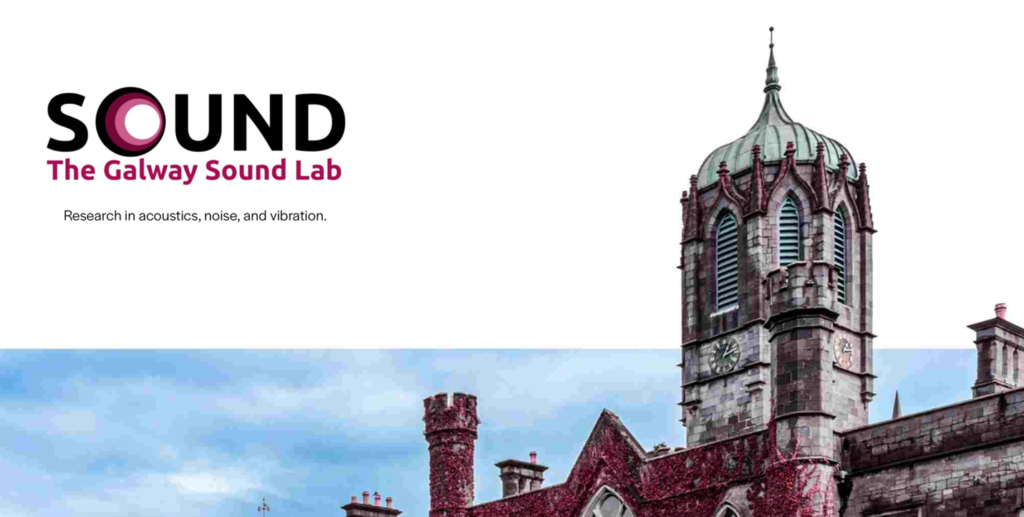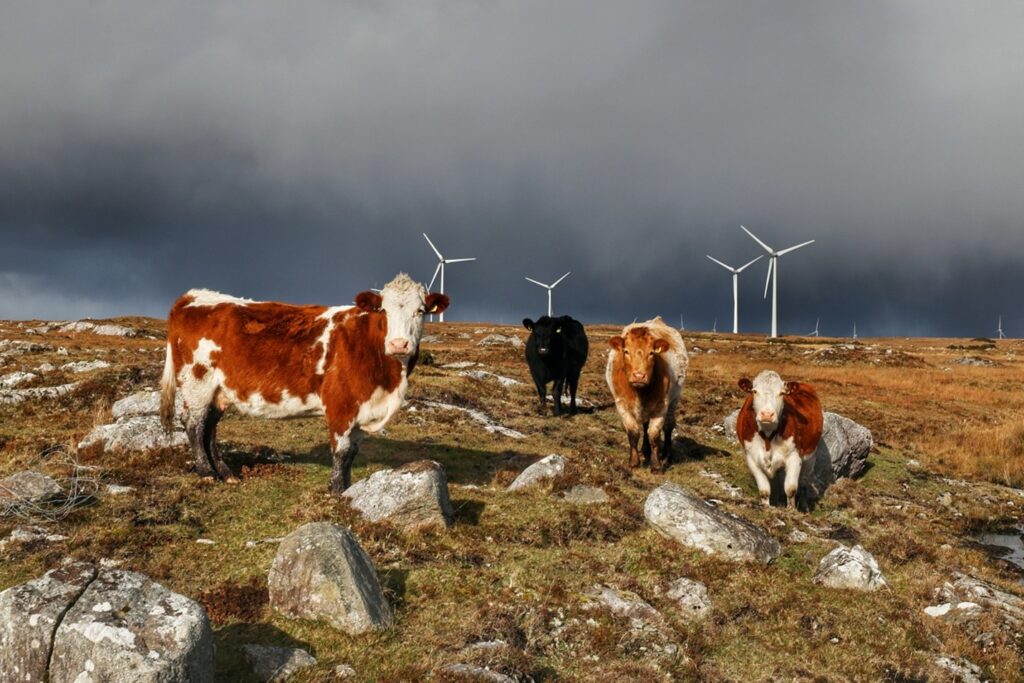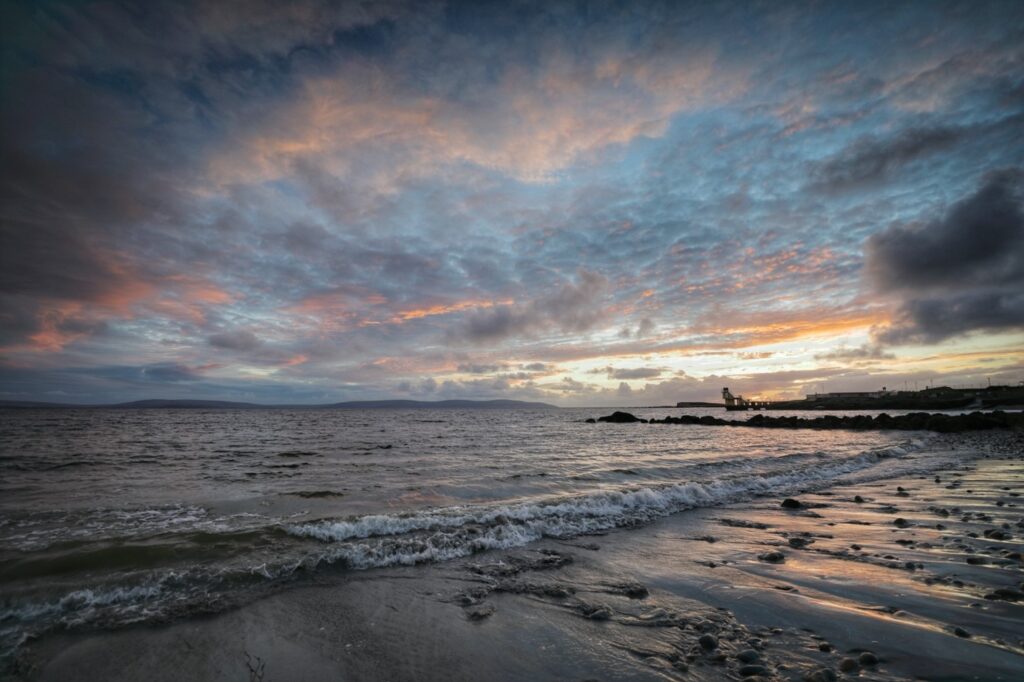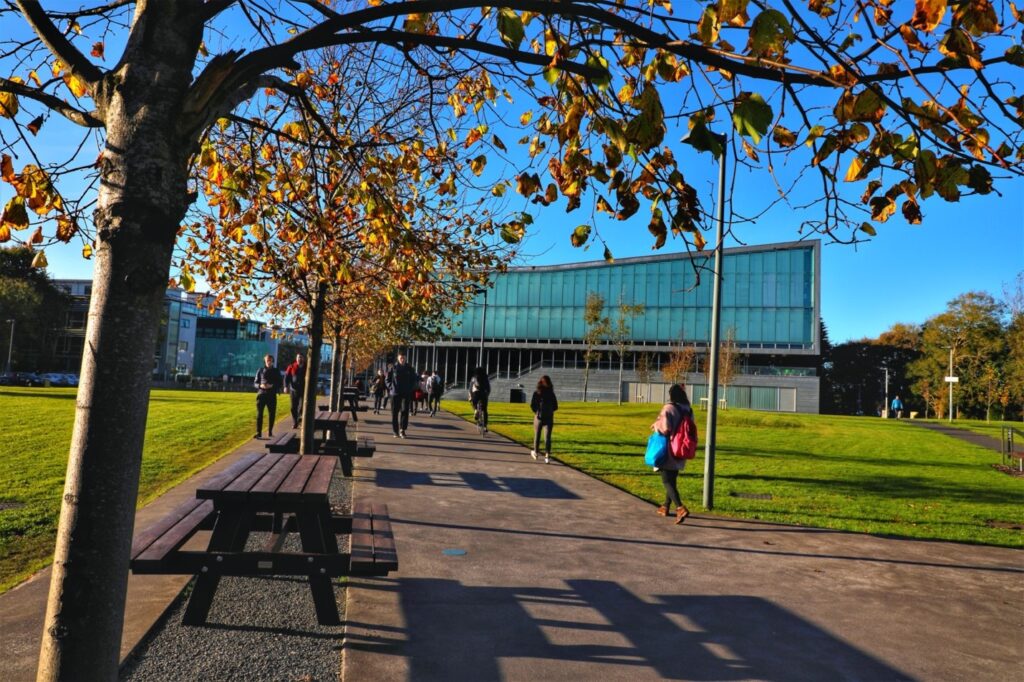Launching a New Acoustics Research Center in Galway, Ireland

The Galway Sound Lab, nestled within the University of Galway, was recently launched in Ireland. Founded in 2023, the Galway Sound Lab is a centre for research in acoustics, noise and vibration, and is housed in the award-winning Alice Perry Engineering Building at the University of Galway. The Lab is undertaking research in acoustics, noise and vibration, and part of its mission is to make research accessible to the broader community, ensuring that findings resonate with all who seek to better understand the world of sound. Together, we’re amplifying the impact of acoustics for a more connected, informed, and harmonious world.
Our Research
While the lab considers all areas of noise control, the lab currently has the following active research projects.
The ASHORE Project – Assessing the Noise from Offshore Wind Turbines

The potential behind offshore wind energy in Ireland is massive, but how the acoustic impact of such developments is assessed requires significant attention. In the case of wind turbines, we now understand a great deal about the generation of noise at source, but the way noise propagates from the source, particularly over water, requires particular attention. There are no accepted methodologies to assess the long-rage, low frequency noise propagation over sea water.
The proposed project will develop a validated computational model to assess noise propagation over water, specifically for the case of offshore wind turbines around Ireland’s coast. This model will be compared to standard prediction methods, and the study will yield Irish specific correction factors, the first of their kind. This will ensure future developments in Irish waters are assessed to the highest standard, with minimal acoustic impacts.
The project is divided into five separate work packages. WP1 will develop a numerical model to model the long-range propagation of sound over water from offshore wind turbines, including meteorological and surface effects. This model will be compared to results from today’s standard commercial models (WP2), and both will be validated against noise measurements taken on site (WP3). The project will conclude by comparing results to international benchmark test cases and developing Irish specific corrections for offshore wind turbine noise assessments (WP4). Open access to information also plays a central role in this project, and an entire work package is devoted to project management and information dissemination (WP5).
The ASHORE project is funded by the SEAI National Energy RD&D Funding Programme 2022.

Figure: Wind Turbine noise is frequently cited as the most annoying aspect of a wind farm. (Photo Credit: Prof Chaosheng Zhang)
The WindSENSE Project

The aim of the ‘Wind Sense’ project is to generate WTN annoyance maps for Irish wind farms based on novel sound quality models of the prevalence of WTN features around candidate wind farms and the impact of these features on annoyance. Wind turbine noise annoyance maps will be generated for the candidate wind farms and will allow for the development of a national wind turbine noise annoyance map in Ireland, to inform turbine developers and policy makers. The project involves collaboration with IEA Task 39 Members, and activities are ongoing.
The project is funded under the 2022 Irish Research Council COALESCE (Collaborative Alliances for Societal Challenges) funding call. The COALESCE call was designed to support the development of interdisciplinary and intersectoral collaboration/capacity in the context of national or global challenges. It is hoped awardees will expand their research activities and build the sustainability of their research agenda through enhanced competitiveness for future success in European or international collaborative funding programmes. The Call supports researchers to form new connections and to consolidate existing national and international knowledge networks as part of a challenge-based approach. A challenge-based approach will bring together resources and knowledge across different fields, technologies, and disciplines, including social sciences and the humanities, and indeed beyond academia, into new sectors. A key component of the COALESCE grant is that it is led by a PI from AHSS but includes a Co-PI from a STEM field. Given the interdisciplinary goals of the Wind Sense project, concerning the psychoacoustics of wind turbine noise, the project aligns with the strategy of the COALESCE call.
The RoomPhonic Project

Noise, along with poor room acoustics, can lead to dissatisfaction within the office environment and can significantly adversely affect workers’ performance. Studies have shown that background noise can lead to as much as a 66 percent drop in productivity, and as such, the need to consider the prevailing acoustic environment is now a common business need. For example, the WELL Building Standard includes ‘Sound’ as a concept and aims to bolster occupant health and well-being through the identification and mitigation of acoustical comfort parameters, while the LEED green building rating system has indoor environment quality category that focuses on a number of factors, including acoustic performance.
While the current standard of reverberation time and background noise assessments yield important information regarding the overall acoustic characteristics of an (empty) room, they do not give any representation of the overall sound quality in a space – the annoyance associated with noise/sound in the workplace has many factors that are not accounted for in such assessment. A more human-centered approach to workplace acoustic comfort assessment is required and this project has been designed to achieve this by incorporating sound-quality based soundscape techniques in the assessment process.
This project is in partnership with Irelands leading manufacturer of acoustic measurement equipment, Sonitus Systems.
Noise and the UN SDGs (Sustainable Development Goals)
Sustainable development involves the simultaneous pursuit of economic prosperity, environmental quality, and social equity, and the UN Sustainable Development Goals (SDGs) describe the major development challenges in these pursuits. The SDG Framework comprises 17 broad goals, which cover a wide range of issues including poverty, hunger, health, education, climate, sustainable cities and communities, amongst others. They were conceived as an indivisible whole, in that the goals relate to and depend on each other. In this context, one might have expected that noise, and its well-established interconnected links to adverse economic, environmental and social impacts, might feature as a target of the SDGs. But this was not the case. Although noise and its management are not clearly identified in any of the 17 goals, this paper posits that noise is an issue cross-cutting through all of the goals. By analyzing the issue of noise through the lens od the SDGs, the paper demonstrates the pervasiveness of adverse impacts associated with noise and concludes that a failure to adequately address noise presents a significant challenge to the realization of sustainable development. The effects of noise need to be better integrated into concepts related to sustainable development, and commitments to meeting the SDGs must not be at the expense of the sonic environment.

More Information
For more information, please check out our website: www.thegalwaysoundlab.com
Or email the Director of the Galway Sound Lab: Dr. Eoin King – eoin.king@universityofgalway.ie

The Galway Sound Lab is housed within the award-winning Alice Perry Engineering Building at the University of Galway, Ireland (Photo Credit: Prof Chaosheng Zhang)


